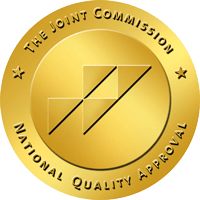During your naltrexone treatment program and recovery, you may wonder what the difference between naltrexone vs Suboxone is. Both are prescription medications that can reduce cravings and improve recovery outcomes.
Opiate abuse in the United States has reached record heights. In 2017, the severity of the opiate epidemic in the United States led to President Trump declaring a public health emergency. Overdoses are now the number one cause of accidental death in the United States. Americans are now more likely to die from an opiate overdose than a car accident.
Additionally, opiates include both prescription medications and illicit narcotics. Many times, prescription opiate addictions lead to experimentation and addiction to illicit opiates, like heroin. In fact, roughly half of all heroin addicts previously struggled with a prescription opiate problem. Opiate addiction can cause cravings and post-acute withdrawal symptoms for weeks, or even months after you completely detox from your opiate of choice.
Opiate Addiction
Opiates are psychoactive substances derived from opium plants that are central nervous system depressants. They create feelings of relaxation and happiness. Opiates can also make you feel a warm sensation throughout your body. Opiates can include prescription and illicit drugs, including:
- OxyContin
- Vicodin
- Fentanyl
- Morphine
- Heroin
- Krokodil
- Lean (purple drank) and Codeine
Opiates cause your brain to release a rush of dopamine. This overwhelms you with pleasurable emotions and feelings. However, when you are no longer intoxicated, you are depleted of dopamine, which creates the comedown effect. Since your brain associates opiate with pleasure, your brain rewards opiate use with a rush of neurotransmitters and withholds neurotransmitters when you remain clean and sober. You can experience intense and powerful cravings and withdrawal symptoms within hours of your last use, which makes maintaining abstinence difficult.
A Suboxone or Naltrexone treatment program can provide you with medication-assisted therapy during recovery.
Naltrexone Vs Suboxone
There are several major differences between naltrexone vs Suboxone. Naltrexone is an intramuscular injection that blocks your opiate receptors. Shots are administered monthly and the effects last for up to 28 days. Naltrexone prevents you from experiencing euphoria or intoxication if you use opiates.
Suboxone is a pill or film that you take daily. Suboxone blocks opiate receptors for up to 72 hours. However, Suboxone also contains buprenorphine, which is a synthetic opiate that helps limit cravings. Both naltrexone and Suboxone require a prescription from a medical professional and can be utilized in addition to inpatient treatment program and outpatient treatment programs. Naltrexone is not addictive, meaning that if you stop receiving naltrexone injections, you will not experience withdrawal symptoms. Since Suboxone contains a synthetic opiate, it is physically addictive. This means that when you decide to stop using Suboxone, you will need to taper off in order to limit withdrawal symptoms.
Finding Treatment Today
During recovery from opiate addiction, understating the difference between naltrexone vs Suboxone is important because it ensures you choose the best course of treatment for your needs. If you or a loved one is ready to reach out for help and begin the recovery process, call us today at 866.782.0247.







